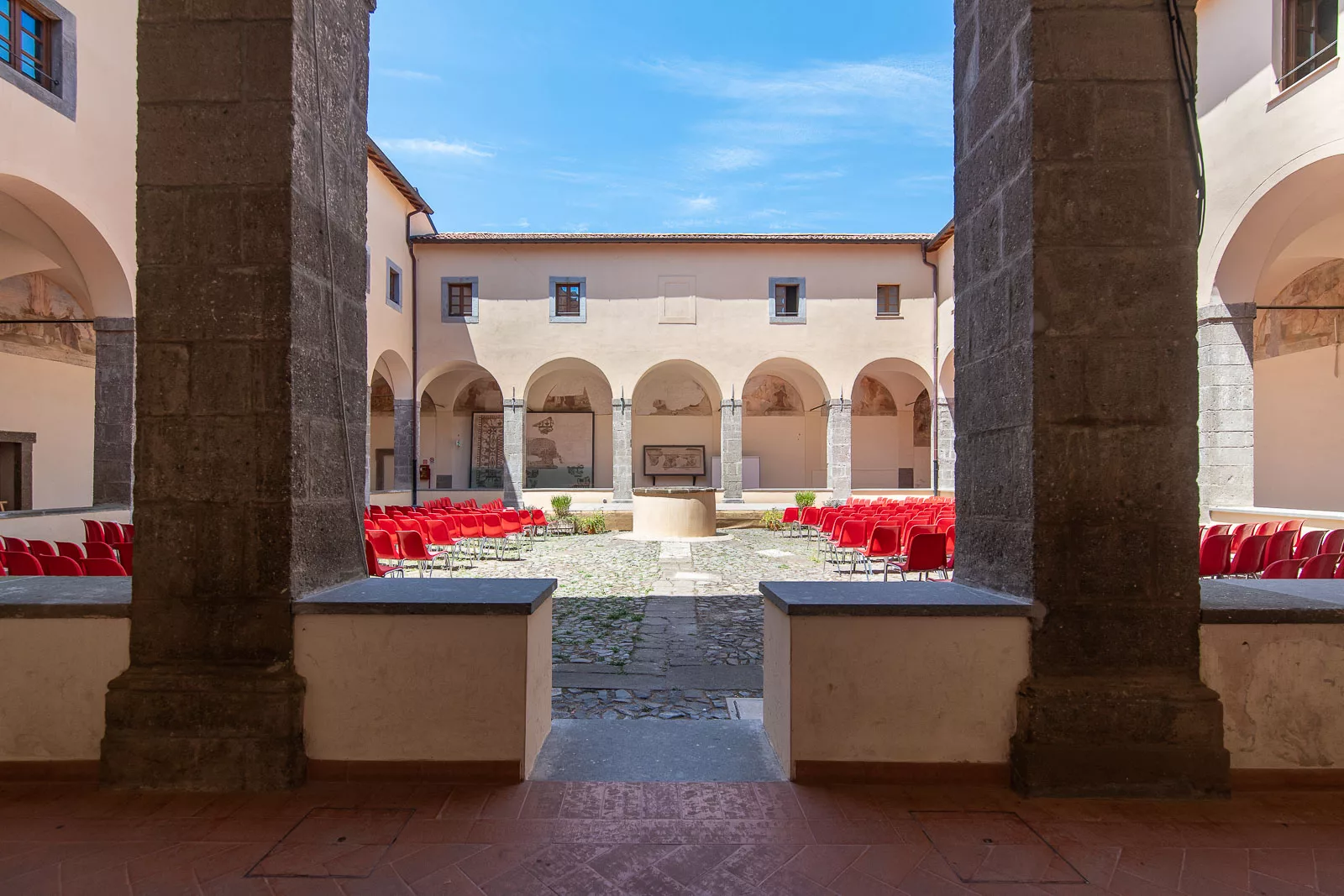House of Culture (former Convent of Carmel)
The architectural restoration of a disused former convent, transformed into a multipurpose facility with great impact on the city’s cultural life
2014 – 2015
OVERVIEW
Architectural restoration of the former Convent of Carmel
CLIENT
Municipality of Velletri
CATEGORY
Architectural restoration
COST
€ 2,970,956.63
LOCATION
Velletri, Lazio, Italy
PROJECT DESCRIPTION
Architectural restoration work at the former Convento del Carmine, carried out by Edilerica after more than 50 years of neglect, has made it possible to transform the structure into an important multifunctional space that hosts cultural initiatives aimed at the city.
For the intervention, the principles of essentiality and austerity belonging to the original structure were respected, both in design and in the use of simple, low-impact materials such as terracotta, wood, iron, glass, stone, and natural lime plasters.
On the ground floor, where the church originally stood, architectural restoration work has created an auditorium that can also be used as a concert hall, while an exhibition hall has been created in the former refectory. The dormitories have, however, been converted into a convention hall and historical archives, while the old cells have been used as reading rooms.
The complete replacement of the floor slabs made it possible to strengthen the load-bearing structure and to use the second floor to house the Municipal Library and the House of Culture, a true centerpiece of the city.
Great attention was also paid to the finishing of outdoor spaces. In the original garden, of about 3,000 square meters, a colonnade has been maintained that divides it into two parts: the first, more protected, is reserved for the evergreen essences typical of the Italian garden; the second is adapted as an outdoor meeting and gathering space.

The frescoes
The former Convent of Carmel was vacated by the religious order in 1870 and then used as a cadastral office until the 1960s. Today, the convent preserves frescoes of rare beauty, which time and human action had relegated to a state of decay and neglect. In the former refectory we can admire the classic “Last Supper” and a depiction of Elijah on the chariot of fire.
These frescoes have been attributed to Gaspare Dughet, also known as Poussin Gaspare Dughet, brother-in-law of Nicholas Poussin, one of the greatest French painters of the seventeenth century, with whom the former is often confused.
Gaspare Poussin (Rome 1613 – Florence 1675) lived in Italy for a long time, also collaborating with the great Piero da Cortona, specializing in landscape painting.
Photo reportage

